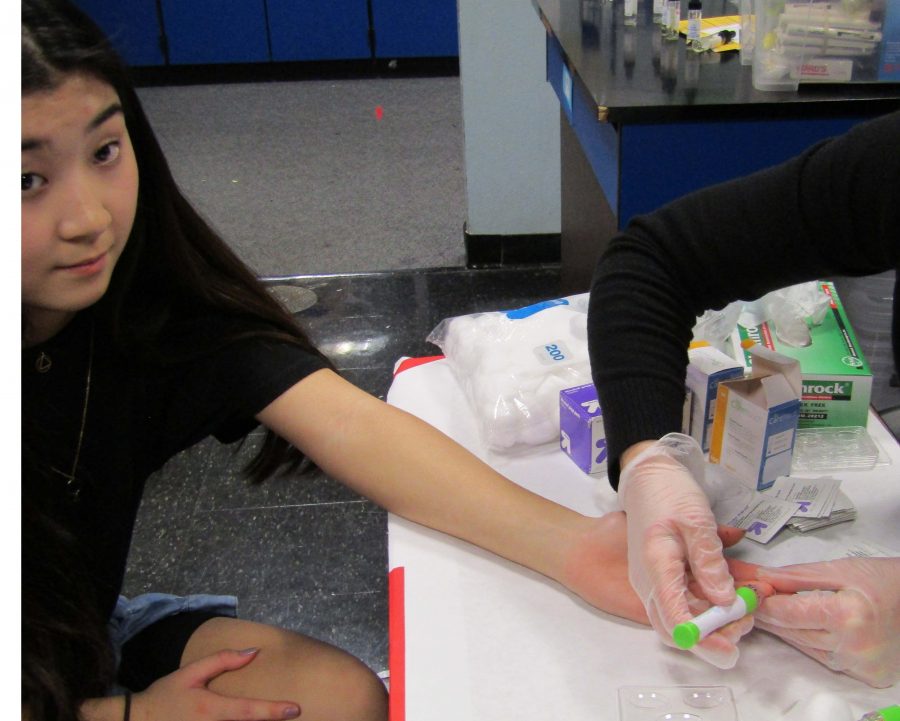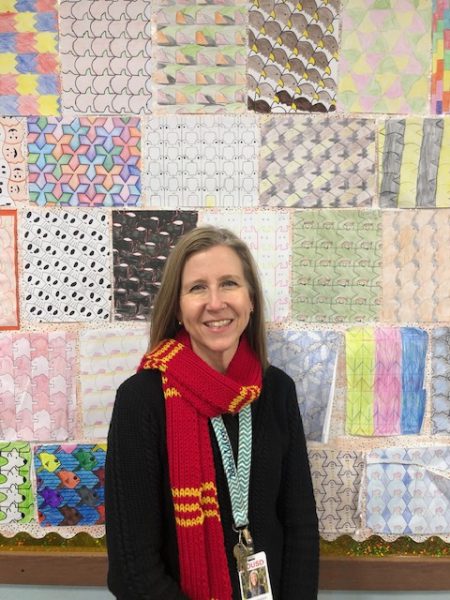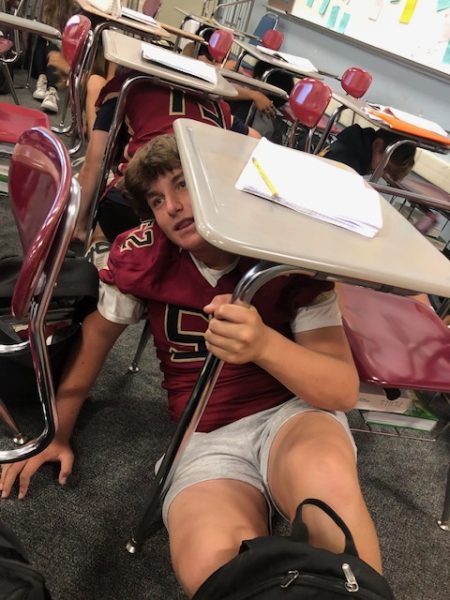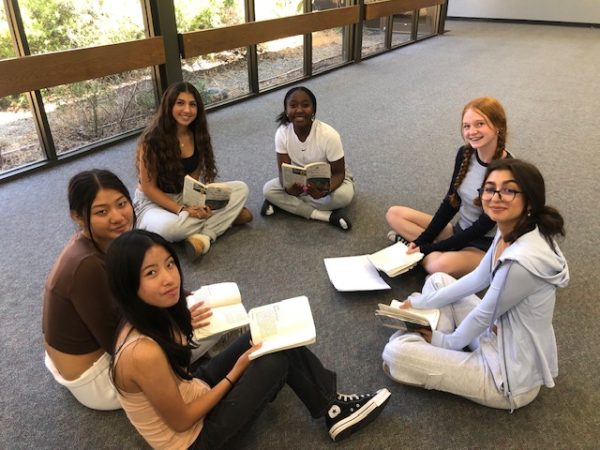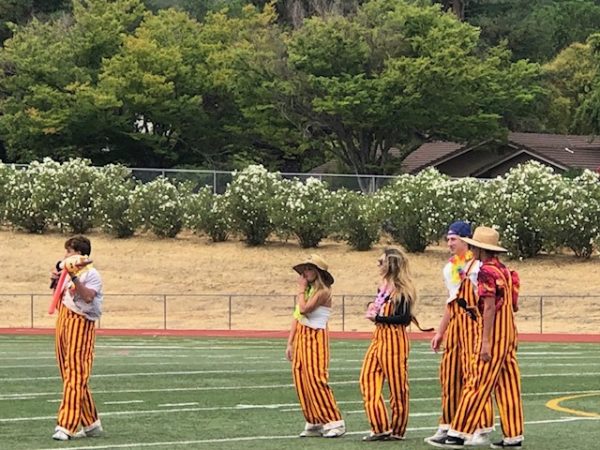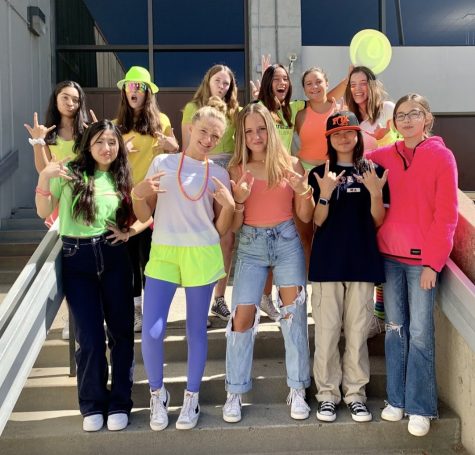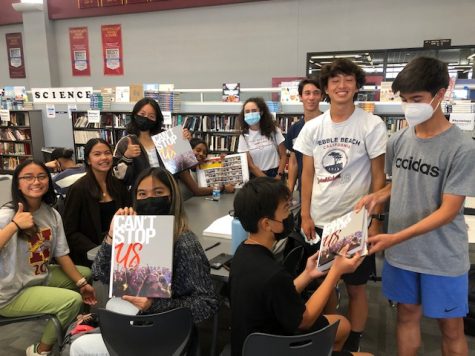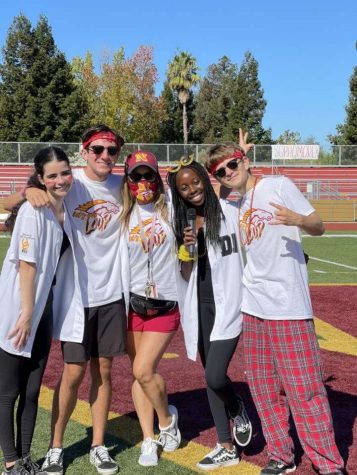Physiology performs annual blood test
Junior Anna Seiki gets her finger pricked at annual physiology class blood testing.
April 24, 2017
Most students put their blood, sweat, and tears into their academics, but in physiology, that is more true than ever.
On March 13 and 14, all periods of physiology discovered their blood type. With the help of the school nurse and necessary supplies, students got their fingers pricked. Using their blood samples, they added A, B, and Rh antibodies to see if the antigens were present. Blood clumping meant that the specific antigens were present.
Junior Julia Bender described what work was done for the blood typing event. “Leading up to it, we had to complete a pre-lab, learn and fully understand what antibodies and antigens were, and how they fight each other,” Bender explained.
Students had been learning about blood in their bodies, as well as what antigens and antibodies are. Previously, they participated in a mock blood typing lab, where synthetic blood and chemicals were used to see the clumping of the blood when antigens were added.
“I was very scared in the beginning because I didn’t want it to hurt. I had to hold Mrs. Starr’s hand, but it ended up only hurting a little,” junior Sarah Freed said.
Although there was work involved with this lab, people could opt out of getting their fingers pricked. Some people in the class are squeamish of blood, so they had to bite the bullet if they wanted to find out their blood type.
Other students are completely unphased and were excited to find out what type they had.
“Going into it, I coached myself and told myself it was going to be okay. I went in line and I watched the girl in front of me get her blood typed. When I saw the nurse squeezing the blood into the tray, I felt a little queasy. When it was my turn, it was all fine until she squeezed my own blood. I got super dizzy and pale and the nurse told me to sit down on the side. Mrs. Starr came to the rescue with an ice pack and instructions to put my head betweenmy legs,” Bender said.
Both girls found out they had O negative blood.
Corinne Starr, the physiology teacher and facilitator for this event, explained the behind the scenes.
“I want students to understand how
blood typing works and I want them to know their blood type,” Starr said of her reasoning for this lab.
Starr has been doing this lab for as long as she has been teaching at Northgate. A representative from MDUSD gave Starr approval to do the lab as long as she disposed of the materials correctly, received permission from parents, and the school nurse was present.
A lot of work went into this lab. “I was very fortunate to get all new blood typing equipment through Donors Choose [a website that allows teachers to get funding for equipment]. We used CareTouch Lancing devices and Lancets, alcohol swabs, blood typing trays, A, B, and Rh antisera, and lots of fun bandaids,” Starr said.
Overall, it was a huge success. Students had fun, applied their knowledge, and found out an important piece of information about their bodies.

